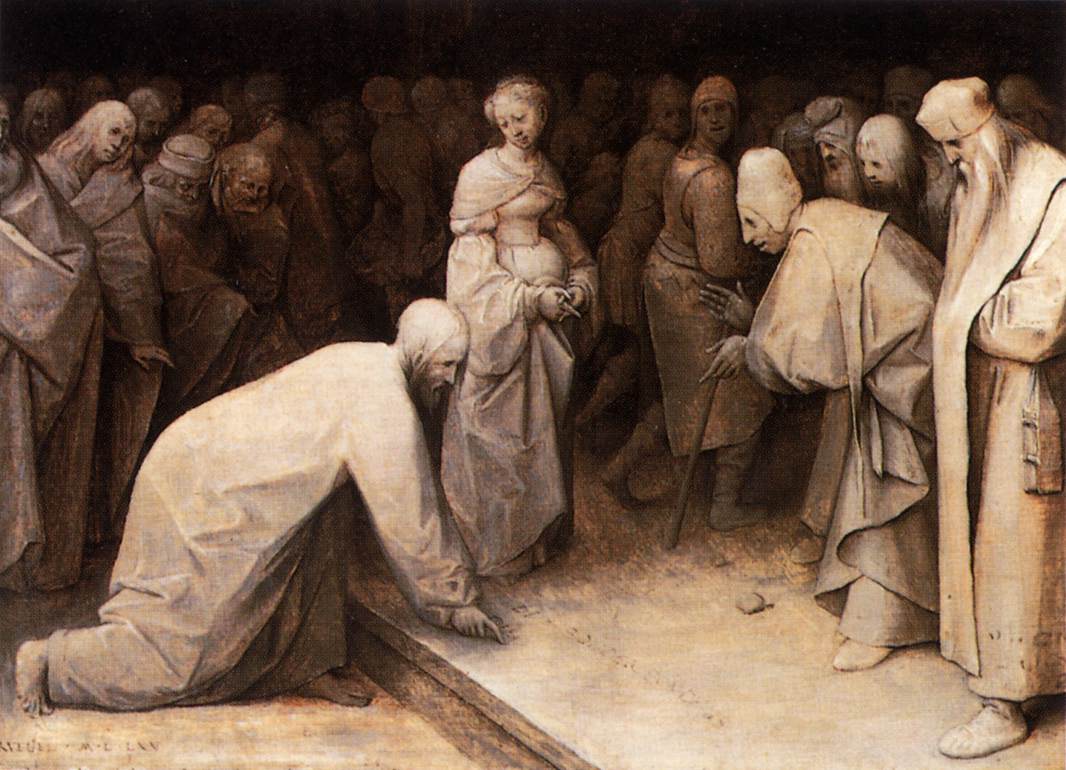Description
The painting Christ and the Woman Taken in Adultery by the artist Pieter Bruegel the Elder is a masterpiece of the Flemish Renaissance. The work, created in the 16th century, shows a biblical scene in which Jesus saves a woman accused of adultery from being stoned to death by a mob.
Bruegel's artistic style is unique in this work, as it combines elements of the Italian Renaissance with the Flemish tradition of landscape painting. The composition of the painting is very interesting, as Bruegel uses the technique of perspective to create depth in the scene. The figure of Christ stands in the center of the painting, surrounded by a crowd of people who are watching him.
The use of color in the painting is striking, as Bruegel uses a palette of bright and vibrant colors to depict the scene. The blue sky and green grass in the background create a contrast to the dark colors of the crowd's clothing.
The history of the painting is very interesting, as it is believed to have been commissioned by Cardinal Federico Borromeo of Milan in the 17th century. The work was stolen during World War II and recovered in 1945.
One of the lesser known aspects of the painting is that Bruegel included many details in the work that are not visible to the naked eye. For example, there is a figure at the bottom right of the painting who has an arrow stuck in his leg, suggesting that he is a hunter who was wounded while hunting.
In short, Pieter Bruegel the Elder's painting Christ and the Woman Taken in Adultery is a Flemish Renaissance masterpiece that combines elements of the Italian Renaissance with the Flemish tradition of landscape painting. The painting's composition, color, and history are very interesting, and Bruegel included many details in the work that are not visible to the naked eye.

